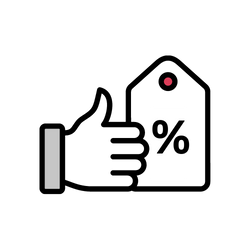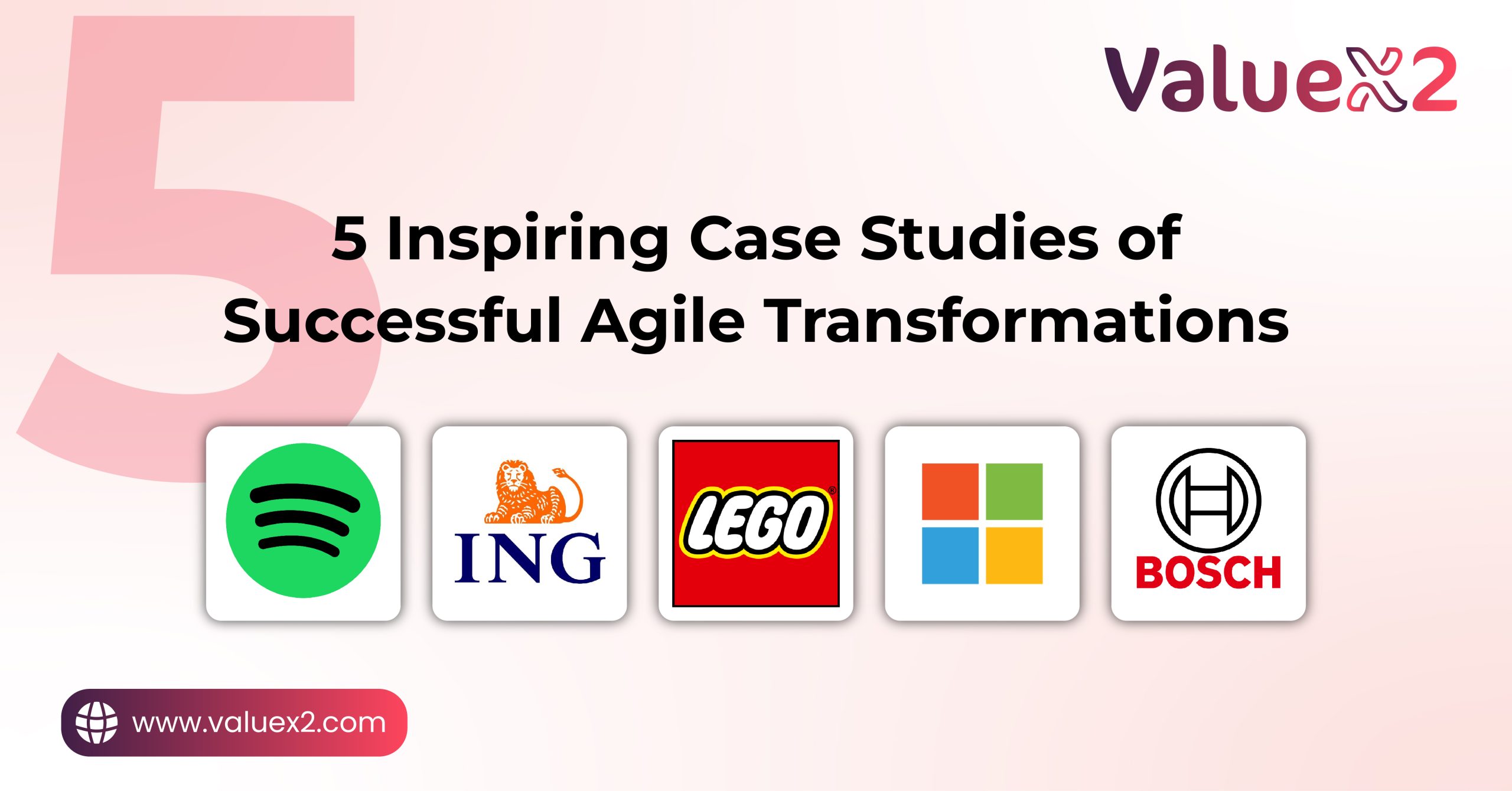-
 Courses
Courses
- ICagile Certifications
- SAFe Certifications
- SAFe® Agile Product Management (APM)
- Implementing SAFe® with SPC Certification
- SAFe® Release Train Engineer (RTE)
- SAFe® for Architects (ARCH)
- SAFe® Lean Portfolio Management (LPM)
- SAFe® DevOps (SDP) 6.0 certification
- Agile HR Explorer - SAFe (AHRE)
- SAFe Advanced Scrum Master (SASM)
- SAFe for Teams (SP)
- SAFe Product Owner/Product Manager (POPM)
- SAFe Scrum Master (SSM)
- Leading SAFe (SAFe Agilist - SA)
- Scrum.org Certifications
- PMI Disciplined Agile Courses
- Kanban Certifications
- Scrum Alliance
- PMI Certifications
Agility in Marketing (ICP-MKG) certification course overview
In this Agility in Marketing (ICP- MKG) certification course the candidate learns how to articulate and implement Lean-Agile marketing principles and ensure more responsive and customer-centric outcomes. The candidate learns how to empathize better with customers, build hypothesis-driven experiments, and respond aptly faster feedback loops to the changing market conditions.
A survey by Agile Alliance in 2022 showed that, the country with the highest agile adoption rate in marketing is the United States, with 62% of marketing teams using agile methodology. Following US, the adoption rate in United Kingdom is 57%, Canada is 55%, Australia is 54% and Germany is 53%.
The Agility in Marketing (ICP-MKG) certification course helps in building a mindset that allows the marketers to reduce customer acquisition costs and increase conversion rates, experiment for a continuous improvement, reduce result-less works, motivate employees and engage teams, ensure improved product quality at scaled demands, rope-in innovation and creativity, respond to quick shifts in the market, increase ROI, and run successful marketing campaigns.
What Will You Learn in Agility in Marketing (ICP-MKG) Training?
- Why Agility in Marketing is required? What is Agility in Marketing?
- How to focus on Customer Centricity, understand customer needs and attract and retain customers’ trust?
- Learn the importance of focusing on outcomes over outputs
- Tools for Adaptive, Customer-Centric Marketing
- Case studies and hands on activities to apply Agility in Marketing in practice
- Agile Marketing Practices, Roles and Artifacts
What is included in the Agility in Marketing (ICP-MKG) Training Fees?
- 2/3-Day (14-hour) live instructor-led, virtual or in-persona training
- Training by apex ICAgile Agility in Marketing (ICP-MKG) authorized trainers
- Interactive workshops, practical exercises, and insightful case studies
- Learning and reflecting by group and individual exercises
- Course Material + Life-time free access of our learning portal
- ICAgile Agility in Marketing (ICP-MKG) Certification fees
Upcoming training schedule
Email [email protected] to pay by Invoice.Events

Agile Marketing | 8-11 Dec | Mon-Thu | 8 am – 11 am EST | 3 hrs/day | Best for US/Canada/Latin America
2025-12-08 09:00 AM (EST) -
2025-12-11 11:00 AM (EST)
$699
- 08 Dec - 11 Dec
- Online Event

Agile Marketing | 8-11 Dec | Mon-Thu | 8 am – 11 am EST | 3 hrs/day | Best for US/Canada/Latin America
2025-12-08 09:00 AM (EST) -
2025-12-11 11:00 AM (EST)
$699
- 08 Dec - 11 Dec
- Online Event
Who should attend the Agility in Marketing (ICP-MKG) training?
There is a talent shortage of agile marketers in the UK and Europe; 67% of marketing teams in the UK and Europe plan to increase their investment in agile marketing in the next year, so Boost your career and upskill your teams by completing this Agility in Marketing ICAgile Certification Training.
The following professionals will benefit from this course:
- Marketing Professionals
- Marketing Leaders
- Agile Coaches
- Scrum Masters
- Agile Practitioners
- Transformation Leads
- Business Leaders
- Entrepreneurs
- Marketing Consultants
- Marketing Freelancers
What does An Agility in Marketing (ICP-MKG) Certified Professional Do?
An Agility in Marketing (ICP-MKG) certified professional responds to constant change by applying lean-agile principles, frameworks, and values, and delivers customer-centric and business-oriented outcomes. The average agile marketing team in the UK and Europe saves 20% of time and 15% of costs. The ICP-MKG professional can:
- Applies Agile principles and practices to marketing initiatives and projects
- Develops and manages Agile marketing strategies and plans
- Collaborates with cross-functional teams that include sales, customer support, product development, etc.
- Facilitates Agile functioning such as sprint planning, stand-ups, and retrospectives.
Valuex2 Experience
Real world case studies
We provide real-world examples and practical cases to help you connect theory with practice at your work
100% pass rate with exam support
We offer post training support to help you prepare for your exam with a 100% pass rate guaranteed
Industry leading trainers
Our expert trainers are industry leaders with several years of hands-on experience
Best Price Promise
We deliver the best value in the market for certification training experience.
15% discount on future training
We offer our alumni 15% exclusive discount for any future training
Free Coaching & Consulting
Post training we offer free one hour consulting and four months email support to answer your exam, career and coaching queries
What are the Agility In Marketing (ICP-MKG) course objectives?
The growing rate of digital adoption and culture of innovation is leading to global demand for Agile Marketing especially in US, UK, Germany, France, Brazil, Netherlands, Poland, Italy and Spain.
- Learn the principles of Agile marketing and know how to apply them in marketing campaigns.
- Know how to collaborate with cross-functional teams effectively to achieve marketing objectives.
- Learn how to use data and analytics to measure success of marketing campaigns and initiate data-driven decisions.
- Upskill customer-centric marketing and know how to progress in persona development, customer experience design, and journey mapping.
- Boost marketing tasks with newer marketing trends and technologies.
- Get more proficient in Agile project management methodologies and tools like Scrum and Kanban.
- Lead Agile marketing teams by developing communication and leadership skills.
- Know how to create a culture of consistent experimentation within marketing teams.
Agility In Marketing (ICP-MKG) Certification Assessment
- No examination, certificate is issued after all course activities completed
- ICP-MKG training is certified by International Consortium for Agile (ICAgile) certification and accreditation body.
- Once the course is completed and the course assignment is submitted and approved, the candidate is provided with ICP-MKG certificate.
Steps to get Agility in Marketing (ICP-MKG) certified

- Step 1: Register for ICAgile Agility in Marketing (ICP-MKG) certification training on ValueX2.com
- Step 2: Attend a 2/3-day (14 hours) live virtual or in-person training
- Step 3: Complete the course activities and assignments during and post training
- Step 4: Complete a quick post training survey
- Step 5: Receive your ICAgile Agility in Marketing (ICP-MKG) certification and a digital badge to share
- Step 6: Continue with your Agile journey and explore further training to upskill and make a difference!
What is the Course Content of Agility in Marketing (ICP-MKG)?
The Agility in Marketing (ICP-MKG) certification curriculum includes different lessons that covers principles of agile marketing, cross-functional team collaboration, customer-centric marketing, data-driven decision-making, newer marking trends and technologies, agile project management methodologies, communication and leadership skills, and adapting culture of constant improvement and experimentation. The course is delivered online via Zoom. It is delivered in various time zones including US, UK, Europe. Participants are from US/Canada, Germany, UK, Brazil, France, Netherlands, Poland, Italy and Spain. The core Agility in Marketing (ICP-MKG) course curriculum is categorized below for your further reference.
- Critical Paradigm Shifts for Marketing
- Customer Analysis and Segmentation for Business Agility
- Adaptive Planning in the Marketing Context
- Teams and Teamwork in the New Paradigm
- Making Short Work Cycles in Agile Marketing
- Experimenting, Learning, and Pivoting
- Bringing Agile Marketing in Practice
Book a Free Consultation with an Agile Certification Expert
What Our Customers are Saying
Frequently Asked Questions?
Generic Questions
We are a diverse team of Business Agility Coaches and Consultants that think that increasing an organization’s business agility is essential for being able to sustain profitability. We help our participants and our clients understand the importance of ‘Agile as a mindset first’ along with developing a clear understanding of how to optimize flow of value creation for customers.
We believe that agile methodologies shouldn’t just be used by software teams; everyone in every function has a job to play in making a company truly agile.
Our goal is to provide other business teams, such as Finance, HR, Marketing, and Operations, with the tools and methodologies they need to adopt business agility in a people-first manner. This is in addition to empowering software teams to scale up agility at the enterprise level.
Benefits of training with ValueX2 are:
- Elite Trainers
- Training is interactive and imparted with real-world case studies
- Post-training support to help you grow in your career and implement agile mindset at your workplace
ICAgile is a leading global agile accreditation and certification body. By providing learning programs that build the capabilities necessary for business agility ICAgile is on a mission design learning experiences that cultivate an agile mindset. ICAgile via it’s rigorously accredited courses delivered by their member organization provide globally-recognized certifications. These are backed by Learning Outcomes and Competencies and motivate people towards genuine competency in their domain.
Yes, ValueX2 is an ICAgile Member Organization. Being a member organization, we create and provide leading agile learning experiences that drive business agility.
Yes, All our ICAgile courses i.e. Business Agility Foundations (ICP-BAF), Agility in HR (ICP-HR) and Agility in Marketing (ICP-MKG) have gone through the ICAgiles’ rigors course accreditation process. This ensures that the courses and training we deliver satisfy all the Learning Outcomes, provide top-quality learning experiences, are highly interactive, and guide people and the global community toward greater agility.
The training is delivered and conducted by ICAgile Authorized Instructors and very experienced Agile Coaches who have deep domain expertise and make the course extremely interactive.
Our committed team of instructors provides training that meets the high criteria of excellence established by the leading Agile bodies like ICAgile. Regardless of the trainer or location, every candidate receives the same high – quality content. They aid in your continued development of the abilities and knowledge required to contribute to your organisation.
Through Instructor Authorization, ICAgile verifies the teaching skills, domain knowledge, and experience of an instructor.
The training fees include the online live instructor-led training and certification costs. Additional benefits include:
15% Discount on future training
Lifelong support and access to a community of Agile Coaches and Mentors to help you progress in your Agile career and journey.
Please refer ValueX2 Terms and Conditions for the respective refund policy. For any further queries please email us at [email protected] and we will be more than happy to help.
For any further queries please email us at [email protected] and we will be more than happy to help.
Yes, we do run promotional offers from time to time. For group bookings, corporate batches or discounts please email us at [email protected] and we will be happy to help.
Course Related
After completion of the ICAgile Agility in Marketing (ICP-MKG) certification training course you will be able to:
- Agile Marketing Drivers and Criticality
Illustrate the key challenges that are driving modern marketers to explore marketing agility. Get an opportunity to relate to the challenges as well as your VUCA context so you understand the need and relevance of Agile Marketing.
- Marketing to Serve vs. Marketing to Sell
Marketing is about serving customers through identifying their expressed and hidden needs. The goal is to create engaged, delighted customers with a longterm relationship to the organization as opposed to selling a single product.
- Defining Agile Marketing
Explain the foundational values and principles of Agile Marketing; Convey how the values and principles address the context and drivers, and provide a basis for a strong operating system that is a better fit for modern marketing functions.
- Differentiating Agile Marketing
Differentiate Agile Marketing from Agile Development and then from common misconceptions regarding approaches such as reactive marketing and unsustainable / ever-changing marketing.
- Customer Centricity Over Organizational Focus
Customer centricity is about listening to what customers are and are not saying, then marketing to them in ways that resonate. Achieving this requires direct customer interaction, an understanding of who our customers really are and an ability to identify their hidden needs. Organizations also need to shift from the perspective of “organization outward,” to “customer inward” (“we have a product to sell” vs. “you have a need we can meet.”)
- Understanding Customer Needs
Show techniques for generating insights into customer needs and for segmenting customers. The insights you develop will help you identify anomalies, pain points, issues or opportunities in the decision journeys of key customer segments.
- Attracting and Retaining Customers by Building Trust
With considerable access to customer information comes significant responsibility – marketers need to be ethical and trustworthy in their use of customer information and build trust through each interaction.
- Focusing on Outcomes Over Outputs
Distinguish between value-add activities and those done out of habit or antiquated management approaches.
- Achieving Outcomes Through Marketing Backlogs and Stories
Describe how to create effective marketing backlogs by using user-centric techniques such as user stories
- Tools for Adaptive, Customer-Centric Marketing
Explain some of the tools (canvases, personas, story maps, etc.) which may be applicable in an Agile Marketing environment, and how they can be used.
- Delivering Marketing Value Through Cross-Functional Teams
Describe a variety of possible teamwork structures and discuss how they contribute toward or detract from Business Agility.
- Continuous Collaboration and Alignment Around Customer Outcomes
Illustrate the characteristics of agile teams and how they differ from traditional marketing teams.
- Making Marketing Work More Sustainable
Explain how to balance responsiveness and flexibility with stability and a predictable flow of work. Consider options for insulating the team from interruption while still embracing changing requirements.
- Flow-Based Approaches and WIP for Agile Marketing
Explain what it means to use a flow-based approach to plan and execute marketing work, including developing a visual system to track work.
- Benefits of Short Iterations for Marketing Work
Describe key practices, roles and artifacts of iterative agile approaches, most commonly encapsulated in the Scrum framework. Provide examples of adaptations that marketers can try if more prescriptive iterative practices do not quite work for them.
- Creating a Culture of Experimentation and Validated Learning
Show how to weave in experimentation into an Agile Marketing process and gain familiarity with experimentation-oriented frameworks and practices.
- Using Marketing Data to Inform Pivot / Persevere Decisions
Show how validated feedback needs to be actionable and actioned. Provide examples of changing plans, changing approaches, abandoning things that do not work, amplifying those that do and pivoting to new directions based on the information collected.
- Agile Marketing in Real Life (Case Studies)
This is a knowledge level training certification and after attending the training you will be able to:
- What is Agile Marketing and why do we need it?
- Agile Marketing mindset, values, methodologies and framework
- Building cross-functional, collaborative, customer outcome-aligned teams
- Design hypothesis-driven marketing experiments to support validated learning
- Achieving Outcomes Through Marketing Backlogs
- Approaches for customer analysis & segmentation for Business Agility
- Tools for creating adaptive & customer-centric marketing campaigns
- How to adapt Kanban, Scrum, & Scrumban for marketing context
- Prepare a personal development plan & team transformation roadmap
- Making marketing work more visible and sustainable
All prices for the courses are mentioned in the Training Calendar. For group bookings, corporate batches or discounts please email us at [email protected] and we will be happy to help.
The ICAgile Agility in Marketing (ICP-MKG) certification training certification is an industry-recognized credential made by marketers, for marketers. It verifies an ability to articulate and implement agile marketing principles and deliver more responsive, customer-centric business outcomes.
Marketing professionals working in:
- SEO
- Content
- Communications/PR
- Digital Marketing
- UI/UX
- Graphic/Creative
- Media
- Brand
- Analytics
- Sales/Lead acquisition
- Marketing Agencies
Business Professionals like:
- Marketing and Business Leaders
- Sales and Marketing professionals
- Agile Coaches
- Marketing Consultants
- Marketing freelancers
- Change/Transformation Managers
- Agile Practitioners
- Entrepreneurs
- Anyone wanting to learn about Lean-Agile ways of working!
Yes, the ICP-MKG lifetime certification cost is included in the ValueX2 Training Fees.
No, there is no expiration for the ICAgile Agility in Marketing (ICP-MKG) certificate. You do not need to renew your ICP-MKG certificate annually. The training fees includes the certification costs.
The Training Calendar includes the cost for each course. For any inquiries regarding group bookings, private sessions, group discounts, or promotional offerings, kindly email us at [email protected] and we shall be happy to assist you.
There are no conditional prerequisites for attending this Knowledge Based level training program. However doing the Foundational Course of Business Agility Foundations (ICP-BAF) will is recommended as it will help build foundational knowledge of agile principles, values, and mindset. Related marketing experience is recommended.
No, you cannot get certified without undertaking the course from an ICAgile Member Organization, like ValueX2. This course includes hands-on learning and you’ll need to actively participate in a live class to earn this certification.
ICAgile Agility in Marketing (ICP-MKG) training certification course forms part of the Knowledge Based Level Courses offered by ICAgile. The key benefits of doing this course is:
By obtaining this agile certification you will develop your ability to articulate and implement agile marketing principles and deliver more responsive, customer-centric marketing activities.
It will help you:
- grow your career in agile marketing,
- expand your skill set, and
- gain a greater sense of purpose.
This Agility in Marketing certification will help boost your marketing teams’ contribution and enhance employee satisfaction.
The only impossible journey is the one you never begin, so take the first step and Enrol Now for the training!
The training covers the below topics:
- Critical Paradigm Shifts for Marketing
- Customer Analysis and Segmentation for Business Agility
- Adaptive Planning in the Marketing Context
- Teams and Teamwork in the New Paradigm
- Establishing Short Work Cycles in Agile Marketing
- Experimenting, Learning, and Pivoting
- Agile Marketing in Practice
- Please download the Brochure for more details. If you have any additional queries, please email [email protected] and we will be happy to help.
Our ICAgile ICAgile Agility in Marketing (ICP-MKG) training certification course is designed keeping in mind the latest research, and on-field experience from real-life agile transformations drawn from the diverse experiences of our Agile Coaches and Mentors. Further, our expert authorized trainers add examples relevant to your context to make the training even more relevant.
The training is structured to be highly interactive, with individual and group activities and fun exercises. Regular breaks are given and our training are offered in both 2-day and 3-day formats.
Attending the complete training is one of the main pre-requisites and first step towards obtaining your ICP-MKG certificate. After completion of the training and associated activities as communicated to you by the trainer, you need to follow the below steps to get the ICP-MKG certified:
- Register for the course from ValueX2
- Attend the complete 2-day/3-day training
- Participate and complete the required activities
- Upon completion your attendance will be marked by ValueX2
- You will then receive an invitation from ICAgile to complete your post-class survey
- After completion of the survey, ICAgile will issue your certification to your email address as a shareable PDF. A copy of the certificate can also be downloaded from your My Certifications Page.
- Any questions or if you are facing any issues please email [email protected] and we will be happy to help.
As per the guidelines of ICAgile, each member organization can determine how they want to assess their participants. We have a combination of in-class activities, group exercises, quizzes and few exclusive activities that our participants do to put their learning to test and practice. There is no additional exam to obtain the certification.

































